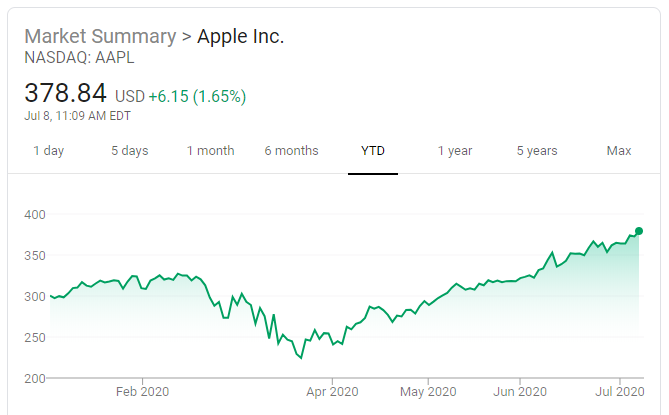Ever since software companies transitioned away from selling software by requiring a large upfront investment and instead offered a cheaper, recurring monthly subscription, the investor community has cheered and rewarded public software firms with much higher valuations. It is very common for “software as a service” businesses to fetch 10 times annual revenue (perhaps double their prior valuations) and less mature high growth subsectors within enterprise software are getting multiple of 20, 30, or even 40 times revenue. Heck, Zoom Video (ZM) currently sports a 46x price to sales ratio based on expected 2021 sales.
Unsurprisingly, anyone who is trying to raise venture capital or goose their stock price is trying to make the case that they offer a recurring revenue, subscription model. What I find odd is that some of the oldest, most mature businesses in the world actually operate this way, but they get ignored. Why shouldn’t Portland General Electric Company (POR) trade for 10 times sales rather than 1.5x? What about Verizon (VZ) and its meager multiple of 1.9x sales? Do they not provide investors with ideal examples of predictable, recurring revenue, monthly subscription business models?
I could shout from rooftops about how all of these businesses should be valued based on their profits rather than sales and that Wall Street has rewarded companies with predictable revenue (fewer quarterly surprises relative to expectations) with higher valuations for decades. “It’s 2020, baby, get with the program dude,” others would yell back. Yes, I guess I am a dinosaur.
With the market doing well, overall valuations extended (the S&P 500 now trades for 22x pre-pandemic earnings) and relatively few undervalued stocks to be found, it has been easier to find overvalued securities. Even if many folks don’t get into the short selling game, I still like to highlight examples of overpriced names, so maybe at least the bulls will consider taking some profits or minimizing their exposure.
There are plenty of candidates, but my choice today is Trupanion (TRUP), a pet insurance company based right here in Seattle. TRUP shares went public in 2014 at $10 and currently trade for $92 each, having made a new all-time high today. The company’s market value is $3.4 billion; a valuation of roughly 5.7x estimated 2021 revenue of $600 million.
If you are blown away by the fact that an insurance company can trade for nearly 6 times forward projected revenue, you are not alone. Oh, well, surely this company has some pretty impressive profit margins to warrant such a premium valuation, right? Not so much…
For the first six months of 2020, TRUP’s revenue was $229 million and net income was $220,000. That was generously rounded up to earnings of 1 penny per share (it actually comes out to 0.6 cents).
So what’s the deal? Well, you guessed right. Trupanion is not an insurance company at all, but rather it’s a recurring revenue monthly subscription service for your pet. Sorry, how could I be so stupid… it says it right there in the company’s income statement:
Let’s not be fooled by terminology. They sell pet insurance and the average monthly policy premium right now is $59 per pet and rising much faster than inflation. I have to wonder how many new pets they will sign up as the price keeps rising towards $100 per month.
However, we should not ignore the company’s growth. Pet insurance was not a big thing in the U.S. a decade ago and younger people seem especially open to the idea now. As of June 30th, TRUP has more than 740,000 enrolled pets (five years ago that figure was below 300,000). Annual retention rates are north of 98% (Author edit 10/15/20: A reader has pointed out that the company actually reports retention in monthly terms, not annual terms. Sorry, I did not catch that. Therefore, >98% monthly retention is more like a mid 80’s annual retention rate).
I am not saying this is a bad business. Rather, I think it is an insurance business and should be valued as such. To illustrate the lunacy of the current stock market valuation, we only have to refer to the company’s own long-term financial guidance (15% operating margins before factoring in marketing costs, interest expense, and income taxes) to deduce that like other insurance products, this business model will ultimately earn net margins in the mid to high single digit range.
Even if one wants to give them a high multiple on those profits (let’s use 40x since they are growing revenue north of 20% per year) and assume a bullish long-term net profit margin (8%), you arrive at a fair value of 3.2x annual revenue. It gets more dire if you instead use a 5% margin and a 30x P/E ratio (1.5x annual revenue).
But don’t take my word for it. Trupanion actually publishes a metric every quarter called “lifetime value of a pet” and the most recent quarterly report pegged this number at $597. This metric factors in the costs of running the business, the monthly cost of the insurance to the pet owner, and the expected number of months each owner will pay based on the demographics of their animals, etc.
If we simply take $597 per pet and multiply that by their current customer base of ~745,000, we arrive at Trupanion’s own estimate of the lifetime value of their current book of business; $445 million.
TRUP’s current market value is more than 7.5 times higher than that, which surely seems to factor in a crazy amount of growth in the future. I have to think that a large chunk of that premium valuation is simply due to the bizarre notion that selling pet insurance is more similar to selling software than to selling human insurance. That seems to be quite a stretch to me, but such is the investing climate these days.









